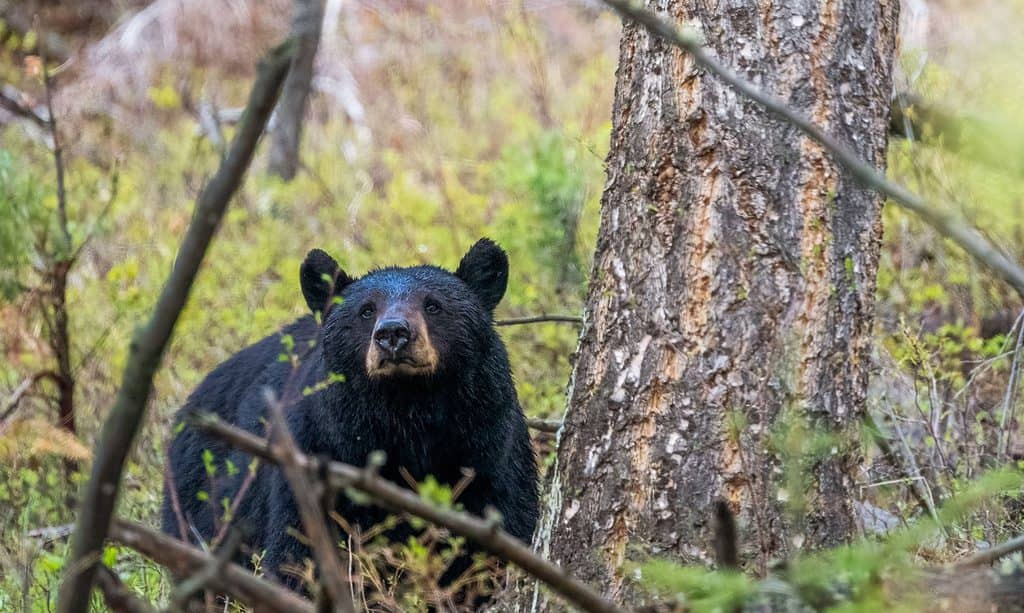
The post Meet the Creatures of Palmetto Island State Park (Louisiana) appeared first on A-Z Animals.
Palmetto Island State Park, nestled along the Vermilion River, offers visitors a chance to explore one of south Louisiana’s wildest corners. Around 100,000 visitors a year are attracted to it for outdoor recreation like boating, camping, hunting, fishing, and hiking. The real draw, though, is the park’s astonishing biodiversity. Dozens of animal species live and thrive here, from black bears and alligators to songbirds and fish. Let us introduce you now to some of the park’s most notable wildlife.
Louisiana Black Bear (Ursus americanus luteolus)

Louisiana black bear (
Ursus americanus luteolus)©iStock.com/Wirestock
A symbol of conservation success, the Louisiana black bear is a subspecies once considered threatened due to habitat loss but now making a slow, welcome comeback. Bears in Palmetto Island roam the bottomland hardwood forests and thick palmetto stands, foraging for fruit, nuts, and sometimes food left unsecured at campsites. (But remember: to keep both humans and bears safe, all food should be stored securely when camping.) Bears are still rare in the park, so if you spot one, it will be a story you’ll tell again and again.
American Alligator (Alligator mississippiensis)
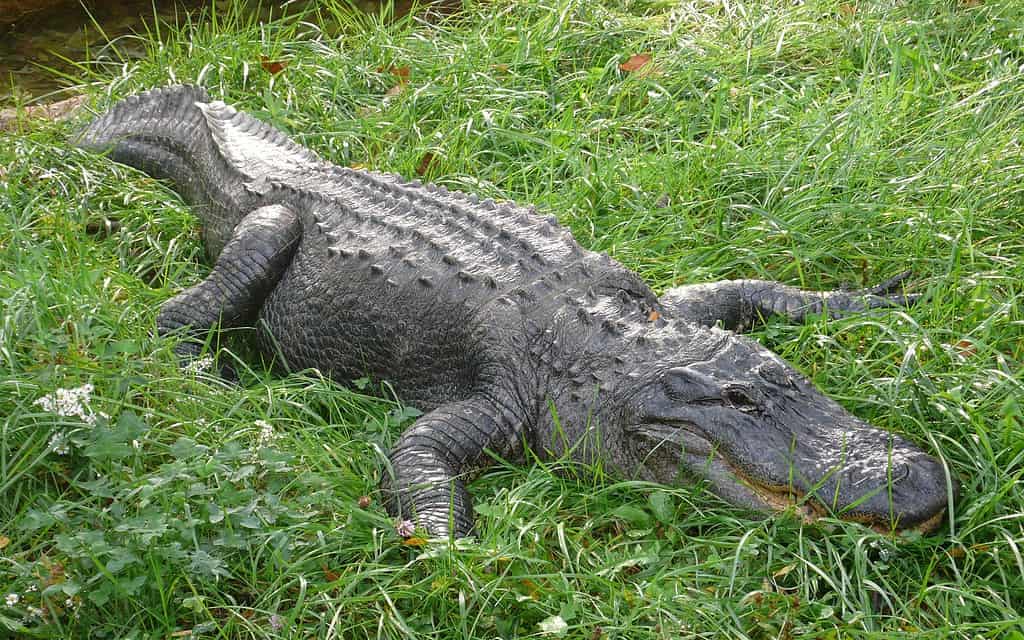
American alligator (
Alligator mississippiensis)A visit to the lagoons and backwaters by kayak or along the Cypress Trail frequently offers glimpses of the American alligator. These ancient reptiles bask on sunny creek banks or lurk almost completely submerged, with just their eyes above the surface. The park’s bayous and ponds provide excellent alligator habitat, supporting both juveniles and mature adults that may reach lengths of ten feet or more. Alligator sightings are common, especially on warm days, but keep a safe distance. Early morning or late afternoon are the optimal times for spotting gators, as they come out to warm themselves.
Wild Boar (Sus scrofa)

Wild boar,
(Sus scrofa)©Piotr Krzeslak/Shutterstock.com
Also called feral hogs, wild boars are an invasive species that are now abundant throughout the swampy lowlands and dense wood margins of Palmetto Island. Visitors often notice evidence of rooting and wallowing (torn-up soil and muddy tracks near water) long before spotting the animals themselves. This damage is a reminder of the significant impact these animals have on the environment: they uproot plants, contribute to erosion, destroy ground nests of animals and birds, and pollute water sources. Feral hogs travel in small groups and may appear anywhere food is plentiful. Near dusk and dawn are the most likely times to see one. Although they are numerous, they are also elusive and try to avoid humans. However, if cornered or provoked, they can attack with sharp tusks and teeth, so give them a wide berth.
Nine-Banded Armadillo (Dasypus novemcinctus)

Nine-banded armadillo
(Dasypus novemcinctus)©Hollingsworth, John and Karen, Public domain, via Wikimedia Commons – Original / License
A shy, nocturnal animal, the nine-banded armadillo is a frequent sight around campsites and along trails, especially in the early morning or late evening. These mammals have strong claws for digging insects out from under leaf litter and possess hard armor to protect themselves from predators. Evidence of armadillos is easy to find: look for small conical holes in soft earth or broken logs overturned in search of insects. There are many of them in the area, and the best time to spot them is after dusk.
Mississippi Kite (Ictinia mississippiensis)
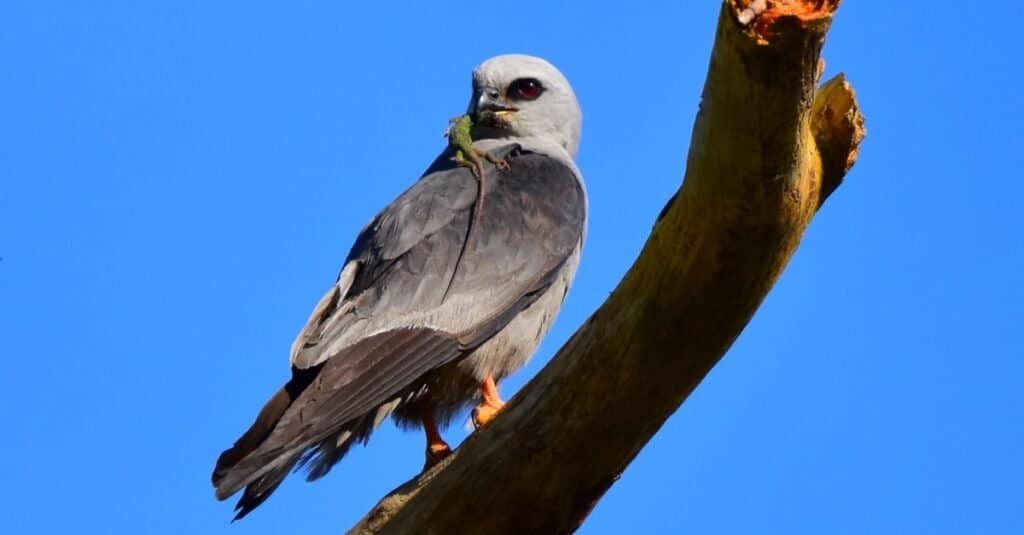
Mississippi kite
(Ictinia mississippiensis)©Chase D'animulls/Shutterstock.com
The Mississippi kite is a gray-and-white raptor that hunts dragonflies, cicadas, and other large insects. Their light, darting flight makes them easy to spot overhead. You will typically see them in loose flocks or pairs gliding above the treetops. During the breeding season, listen for their high piping calls near nests built high in cypress or sycamore trees. Mississippi kites live in the park during the warm months, so look for them from May to September.
Prothonotary Warbler (Protonotaria citrea)
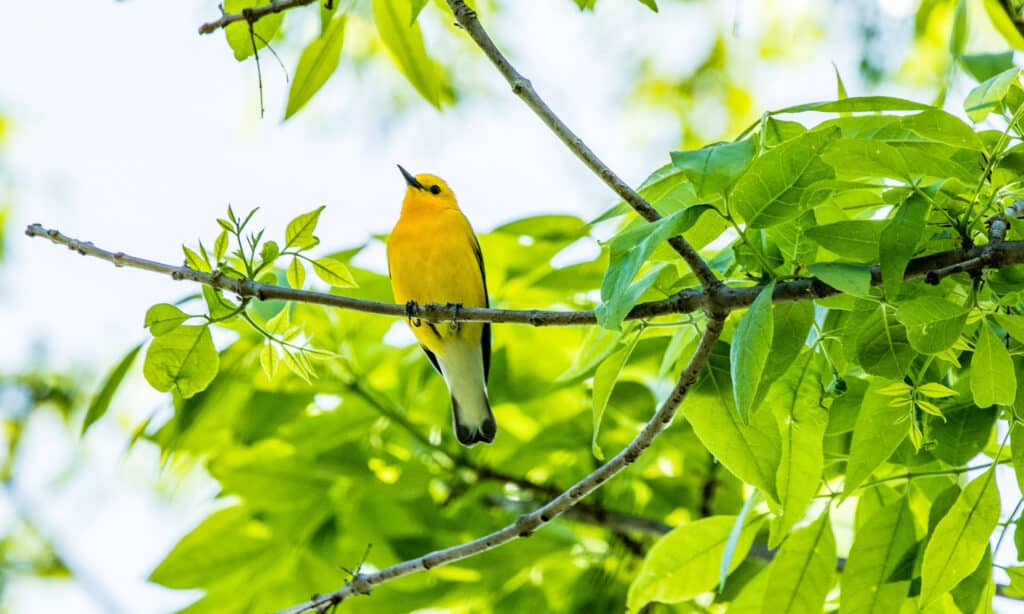
Prothonotary warbler
(Protonotaria citrea)©Mark C. Morris/Shutterstock.com
These small songbirds nest in old woodpecker holes above the water and forage among low branches and thickets for insects. With their brilliant golden bodies and gray-blue wings, prothonotary warblers stand out. Early mornings from late March to July offer your best chance to see or hear their two-syllable song. The park is a hotspot for this species, attracting birders who come to admire them.
Barred Owl (Strix varia)
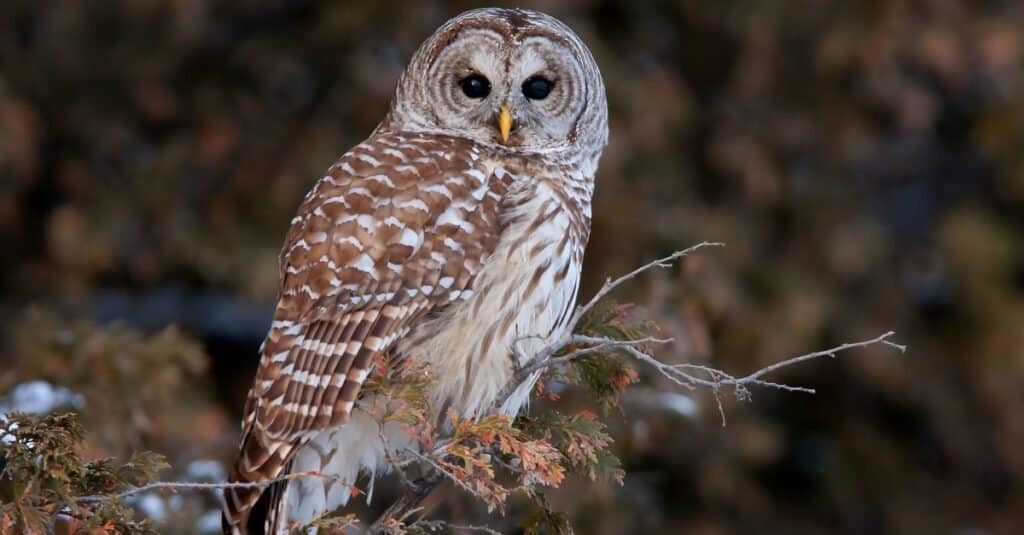
Barred owl
(Strix varia)©Jim Cumming/Shutterstock.com
The barred owl is known for its call, which sounds like the phrase, “Who cooks for you?” They prey on small mammals, frogs, and insects by listening carefully from low perches. Although mostly nocturnal, they may call during daylight on overcast days. Look for barred owls near water bodies or in dense forest groves anywhere in the park.
Green Anole (Anolis carolinensis)
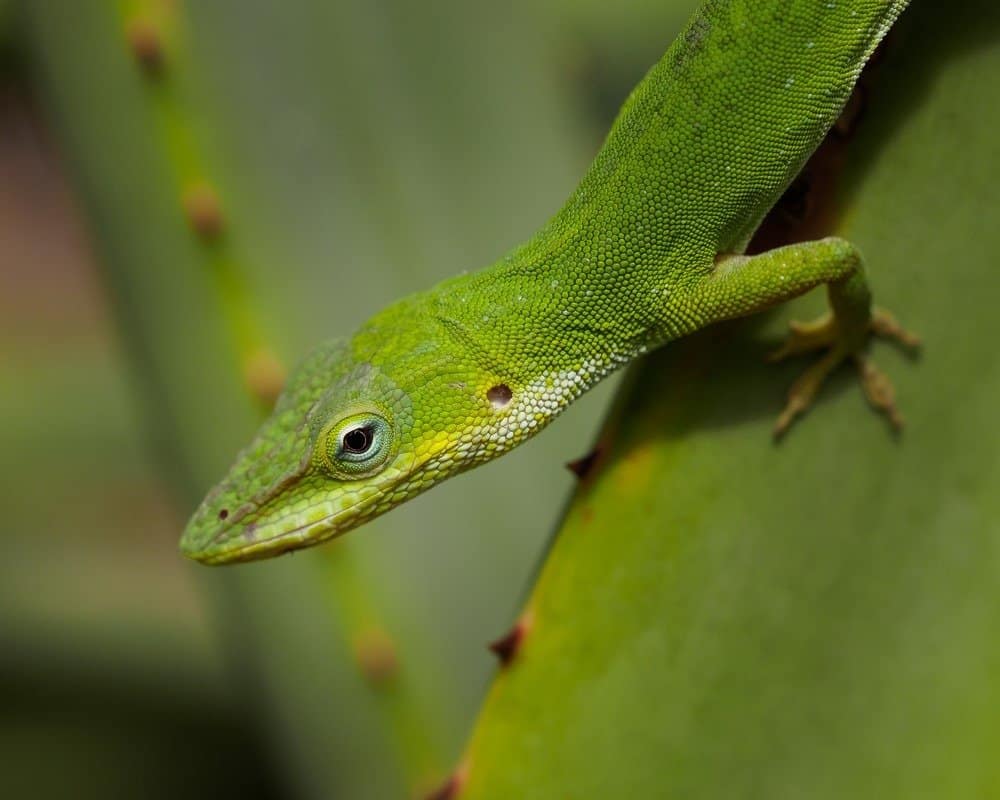
Green anole
(Anolis carolinensis)©Francisco Herrera/Shutterstock.com
Basking on sunlit posts, palmetto leaves, or low shrubs, the green anole is a small lizard that can shift its color from green to brown. They do well in the park’s gardens, forest margins, and around cabins and decks. They’re territorial and often perform head-bobbing displays while defending their claimed space from rivals. The local habitat is rich with insects, so these little guys are abundant and easy to spot on a summer day.
American Bullfrog (Lithobates catesbeianus)
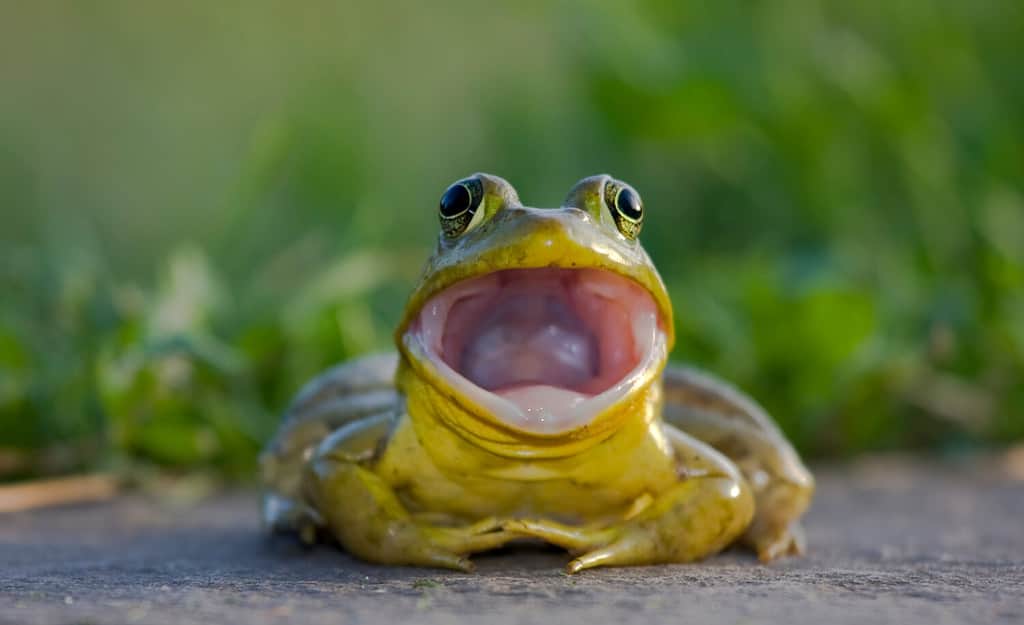
American bullfrog
(Lithobates catesbeianus)©Tau5/Shutterstock.com
As the region’s largest native frog, the bullfrog plays a significant role as both prey and predator in the local ecosystem. They’re most visible around Evangeline Pond and quieter backwaters at twilight. Nighttime flashlight walks often turn up multiple frogs drawn to insects at the water’s edge. Even if you don’t see one, you can’t miss their call, which some say sounds like “jug-o-rum.”
Bowfin (Amia calva)
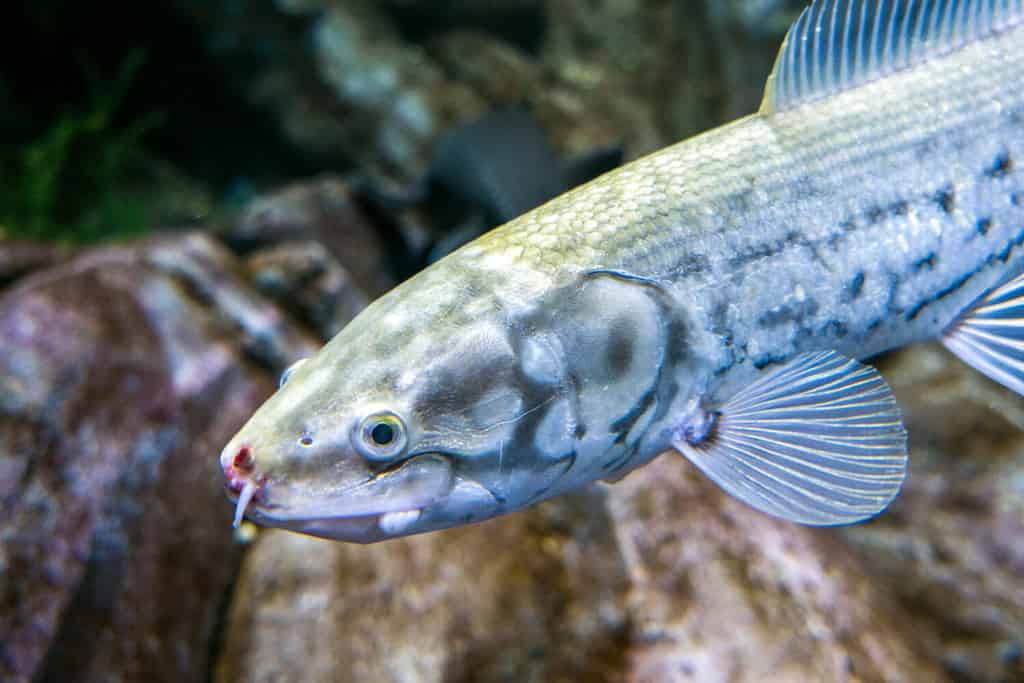
Bowfin
(Amia calva)©Miroslav Halama/Shutterstock.com
Known locally as “choupique,” the bowfin is a living fossil and top predator in the park’s slow-moving bayous and oxbow ponds. It is easily identified by its long dorsal fin, greenish body, and mouth full of sharp teeth. Bowfins can breathe both air and water, allowing them to survive in low-oxygen environments where few other fish can persist. Anglers sometimes encounter them while fishing for other species, but bowfins are rarely targeted due to their tough, “cottony” flesh.
Red-Eared Slider (Trachemys scripta elegans)
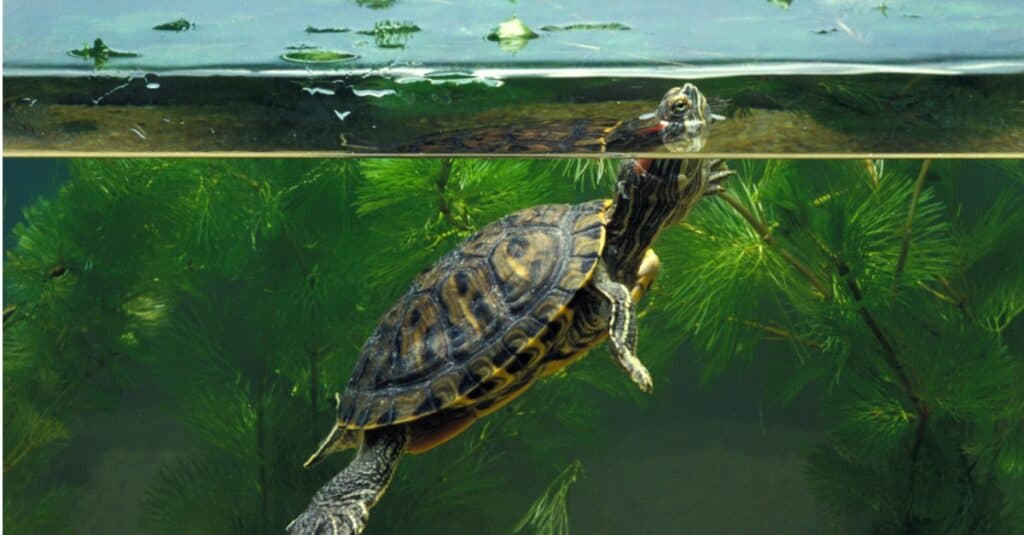
Red-eared slider (
Trachemys scripta elegans)
©iStock.com/slowmotiongli
Sun-warmed logs and pond edges are common resting spots for the red-eared slider, one of the most familiar turtles in Louisiana’s waterways. Their identifying characteristics are a green shell and a distinct red patch behind each eye. They spend much of their time basking in groups and will slip quietly into the water when approached. Sliders are easy to spot on warm days, especially around the park’s main fishing pond and along the boardwalks near marshy areas.
Common Raccoon (Procyon lotor)
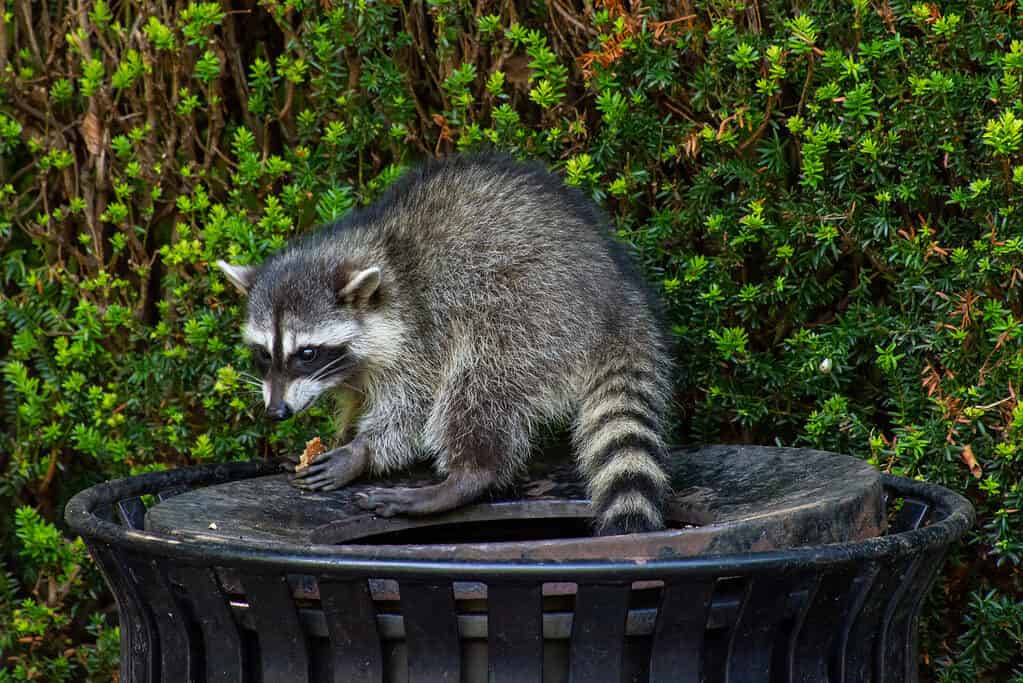
Common raccoon (
Procyon iotor)
©kingma photos/Shutterstock.com
Active mostly after dark, the common raccoon is an expert at living alongside people. In Palmetto Island State Park, raccoons prowl around riverbanks, campgrounds, and picnic sites, foraging for crayfish, frogs, and scraps left by visitors—hence their humorous nickname, “trash panda.” Their nimble hands and masked faces make them instantly recognizable to campers and hikers. Though frequently seen near human activity, raccoons are wild animals and should never be fed. Look for their hand-like tracks along muddy trails and river edges.
Fox Squirrel (Sciurus niger)
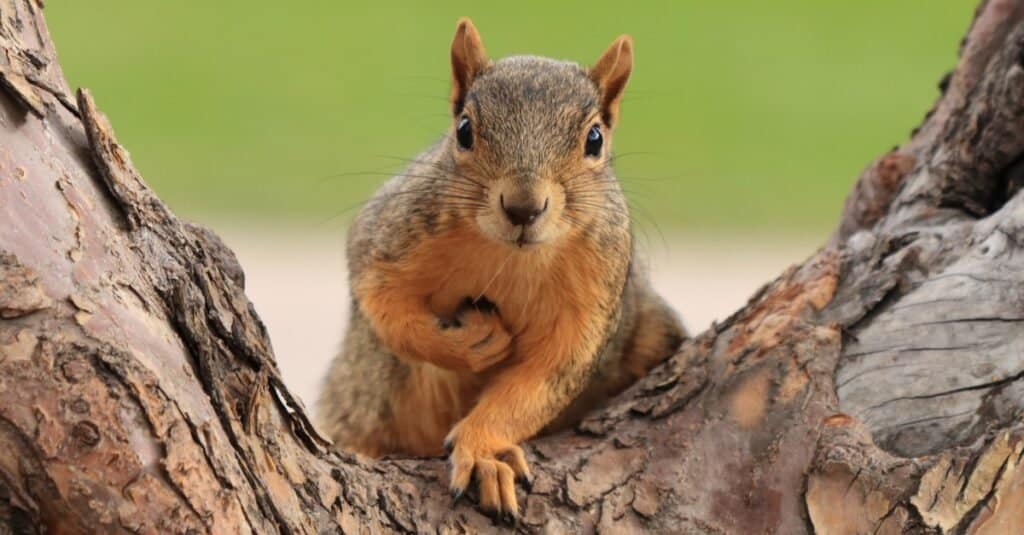
Fox squirrel
(Sciurus niger)©Vaclav Matous/Shutterstock.com
The largest tree squirrel in North America, the fox squirrel is easy to spot bounding through open woods and foraging for acorns and hickory nuts. Their rusty orange or gray coats stand out against green foliage, and visitors often see these squirrels foraging beneath oaks or high in tree branches. Fox squirrels are common throughout the park’s upland hardwood areas and are especially active during fall and winter mornings.
Louisiana’s Natural Soul
Palmetto Island State Park feels less like a place you visit and more like a world you step into. It isn’t just scenery; it’s a living community that thrives whether anyone is watching or not. Knowing that, it feels like a gift just to catch glimpses of the wild inhabitants of the ecosystem. It’s also a glimpse into Louisiana’s natural soul.
The post Meet the Creatures of Palmetto Island State Park (Louisiana) appeared first on A-Z Animals.
October 10, 2025 at 05:32PMDrew Wood
.jpeg)
.jpeg)

0 Comments